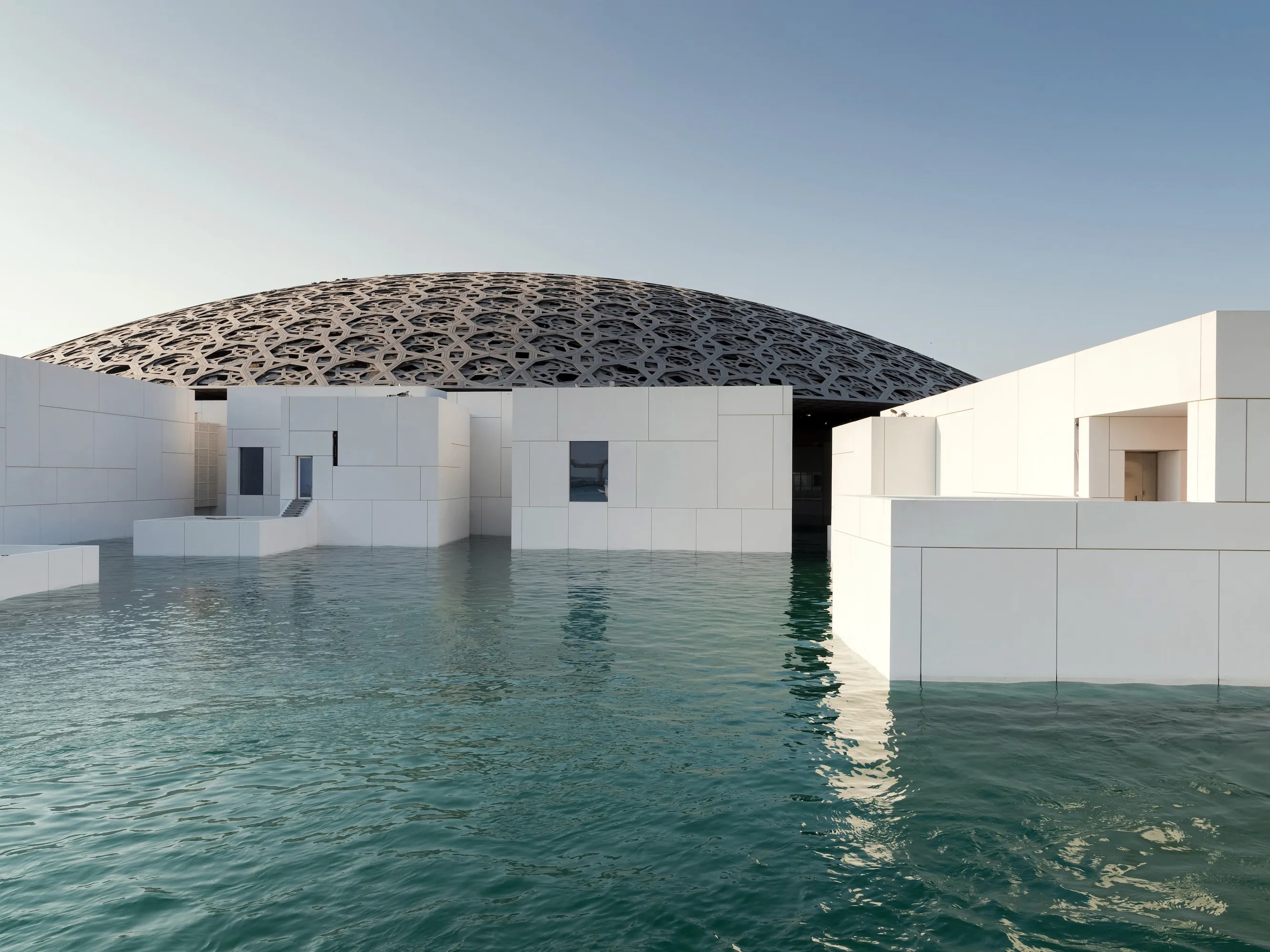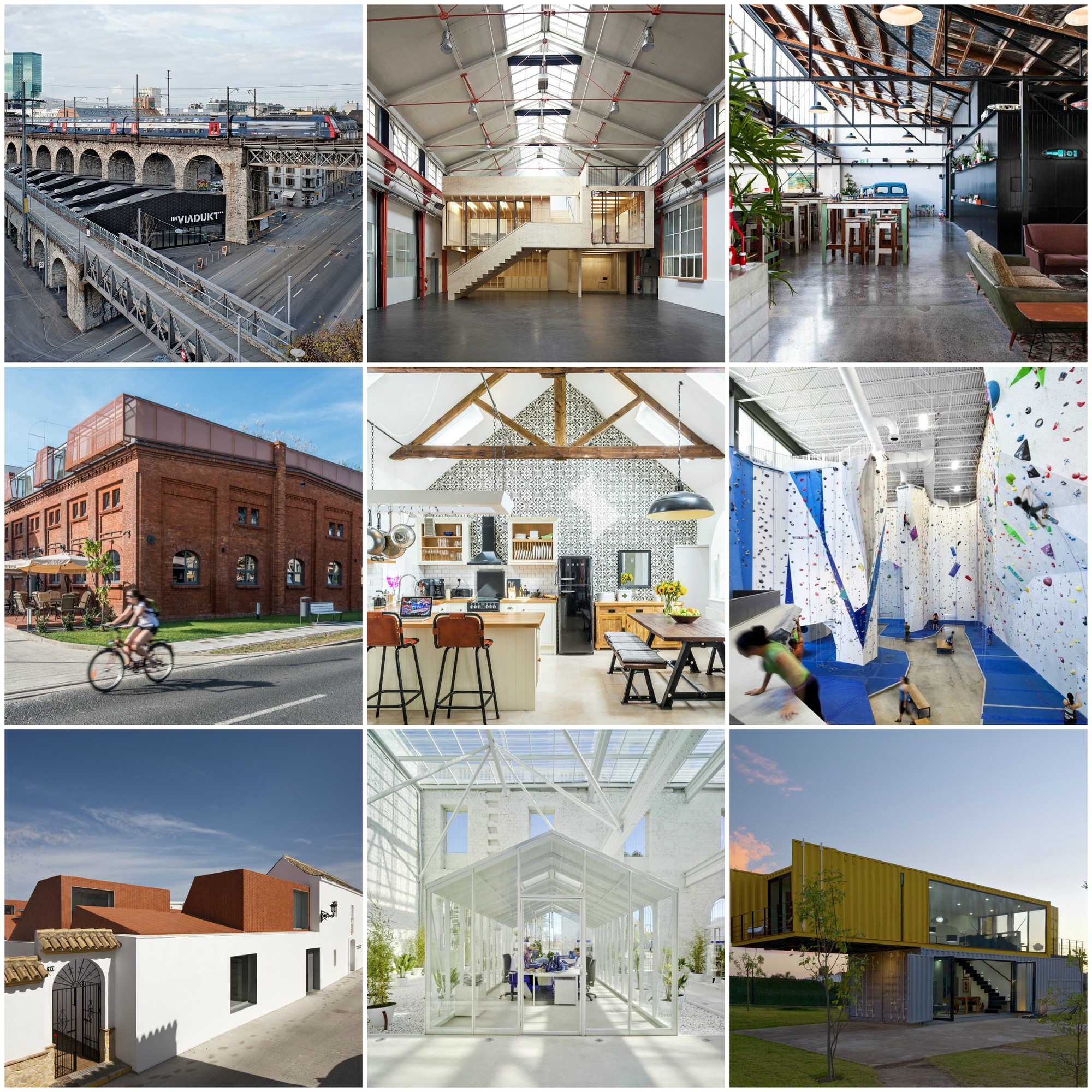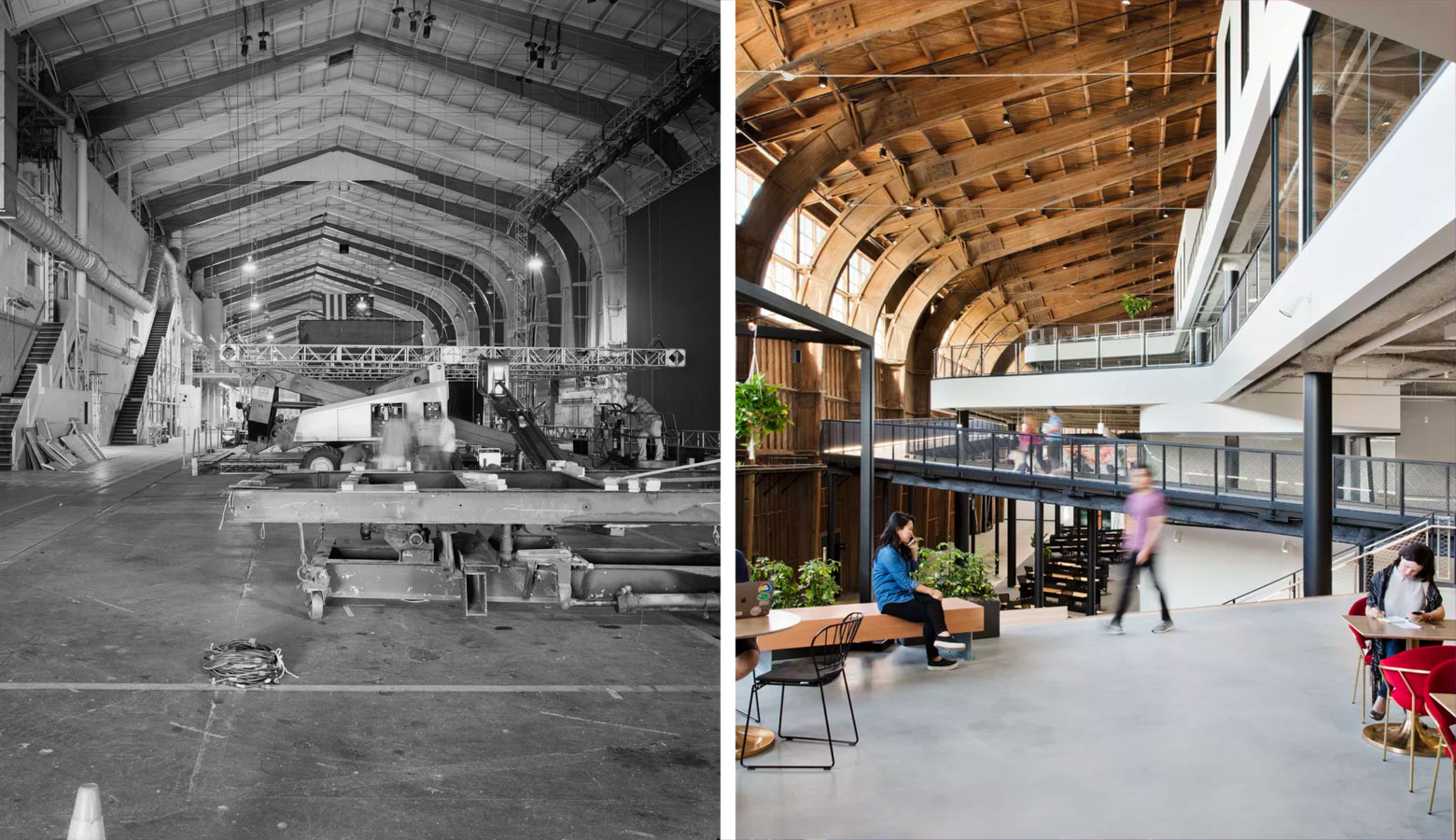Old Buildings Creative Solutions - Revitalizing The Past
Old buildings have a unique charm and historical significance, but they often present challenges when it comes to renovation, adaptive reuse, and sustainability. However, with a creative and innovative approach, these challenges can be turned into opportunities. This article explores the concept of old buildings creative solutions, highlighting how thoughtful design, adaptive reuse, sustainable practices, and modern technologies can breathe new life into these architectural treasures.
Author:George EvansSep 04, 2023218 Shares217.5K Views

Old buildings have a unique charm and historical significance, but they often present challenges when it comes to renovation, adaptive reuse, and sustainability. However, with a creative and innovative approach, these challenges can be turned into opportunities.
This article explores the concept of old buildings creative solutions, highlighting how thoughtful design, adaptive reuse, sustainable practices, and modern technologies can breathe new life into these architectural treasures.
Architects, owners, and developers must decide what is best for the property and the bottom line when it comes to structures with landmark designation or just general historic character. There is not always a clear option.
Working on historic rehabilitation projects requires architects to strike a balance between modernizing a structure to fulfill a contemporary function, keeping the historic traits, or character defining features, of a structure, and doing so in a way that is financially feasible.
Changes to a structure are frequently required in projects in order to meet current code requirements. It's not always simple to accomplish this while preserving a building's distinctive traits.
Preservation And Restoration
Preservation and restoration are crucial aspects of conserving historical and culturally significant old buildings. These processes aim to maintain the original form, character, and historical significance of such structures while ensuring their structural integrity and longevity. Here's a detailed exploration of preservation and restoration:
- Historical Significance- Old buildings often have historical and cultural value. Preservation involves researching and documenting the historical context and significance of a structure. This information guides the restoration process to ensure the building retains its historical essence.
- Documentation- Preservation starts with meticulous documentation. Architects and historians record every detail of the building's architecture, materials, and features. This information serves as a reference during restoration.
- Structural Assessment -Before any work begins, a thorough structural assessment is conducted. This evaluates the building's stability, identifies structural weaknesses, and determines the extent of repairs needed.
- Materials Matching- Preserving historical accuracy requires the use of materials that closely match the originals. This often involves sourcing traditional materials and skilled craftsmen who can replicate historical techniques.
- Conservation Ethics- Preservation adheres to strict conservation ethics, which prioritize minimal intervention. The goal is to retain as much of the original fabric as possible, only repairing or replacing elements that are beyond repair.
- Restoration Techniques- Skilled artisans and craftsmen use traditional methods to restore damaged or deteriorated elements such as ornate plasterwork, stained glass windows, and woodwork. This ensures authenticity and historical accuracy.
Adaptive Reuse And Repurposing Of Old Buildings
Adaptive reuse and repurposing are innovative approaches to breathing new life into old buildings. Instead of demolishing them, these methods give old structures a functional and often contemporary purpose. Here's a closer look:
- Definition- Adaptive reuse involves repurposing old buildings for uses different from their original intent. This can range from converting industrial warehouses into trendy lofts to turning old schools into community centers.
- Economic Benefits- One of the key advantages is the economic revitalization it brings to neighborhoods. Adaptive reuse can attract businesses, residents, and tourists, contributing to local economies.
- Preservation -Adaptive reuse inherently involves preserving the building's historic and architectural elements while making necessary modifications for the new use. This strikes a balance between old and new.
- Sustainability -Reusing existing structures is inherently sustainable. It reduces the need for new construction and minimizes the environmental impact associated with demolition and new building materials.
- Challenges- Adaptive reuse projects often face challenges, such as meeting modern building codes, ensuring accessibility, and accommodating contemporary infrastructure needs. Skilled architects and designers are crucial for overcoming these hurdles.
Sustainable Practices In Old Building Renovation
Sustainable practices in old building renovation are essential for preserving historic structures while minimizing their environmental impact. These practices prioritize eco-friendly solutions and energy efficiency to ensure that the renovation process aligns with modern sustainability goals. Here's a detailed exploration of sustainable practices in old building renovation:
- Energy Efficiency- Improving the energy efficiency of old buildings is a key aspect of sustainability. This may involve upgrading insulation, sealing gaps, and replacing windows and doors with energy-efficient alternatives to reduce heating and cooling costs.
- Passive Design- Architects often employ passive design strategies to maximize natural lighting and ventilation, reducing the reliance on artificial lighting and HVAC systems. This not only saves energy but also enhances occupant comfort.
- Heritage-Compatible Materials- Sustainable renovation seeks to use materials that are compatible with the building's historic fabric. Reclaimed or salvaged materials can be integrated to maintain the building's character while reducing the demand for new resources.
- Renewable Energy Sources- Incorporating renewable energy sources like solar panels or small-scale wind turbines can significantly reduce a building's carbon footprint and energy bills.
- Water Efficiency- Sustainable renovations may include water-saving fixtures and systems to reduce water consumption. Rainwater harvesting and greywater recycling systems can also be integrated.
Modern Technologies And Innovative Design In Old Building Renovation
Modern technologies and innovative design play a crucial role in making old building renovation more efficient, comfortable, and functional. They help bridge the gap between historical preservation and contemporary living. Here's an in-depth look at this aspect of creative solutions for old buildings:
- 3D Scanning and Modeling- Advanced 3D scanning technology can create highly detailed digital models of old buildings. This aids in accurate documentation, design planning, and restoration work.
- BIM (Building Information Modeling)- BIM software allows architects and designers to create digital representations of the building, incorporating all aspects, from structure to systems. This aids in efficient planning and coordination during the renovation process.
- Smart Building Systems- Integrating smart technologies like IoT (Internet of Things) sensors, smart lighting, and climate control systems can enhance energy efficiency and user comfort in renovated old buildings.
- Virtual Reality (VR) and Augmented Reality (AR)- VR and AR technologies enable architects and owners to visualize renovation designs and make informed decisions before actual construction begins.
- Seismic Retrofitting- Innovative engineering solutions, including base isolators and damping systems, can be used to retrofit old buildings to withstand earthquakes and improve safety without compromising their historical appearance.
- Historical Replication- Advanced manufacturing techniques, such as 3D printing and CNC machining, allow for precise replication of historical architectural details and ornamentation.
- Flexible Interiors- Innovative interior design solutions enable the creation of flexible, adaptable spaces that can serve multiple functions over time, accommodating changing user needs.
- Sustainability Integration- Modern technologies also facilitate the integration of sustainable features, such as green roofs, energy-efficient HVAC systems, and rainwater harvesting, into old building renovations.
Community Engagement
- Public Awareness- The first step in community engagement is to raise awareness about the historical and cultural value of old buildings. Local residents and stakeholders should understand the importance of preserving these structures for their community's identity.
- Community Input- Soliciting input from the community is vital. Public meetings, surveys, and workshops can gather ideas, concerns, and aspirations related to the old building project. This collaborative approach ensures that the renovation aligns with community desires.
- Inclusive Decision-Making- Encourage diverse participation in decision-making processes. Include representatives from various demographic groups and community organizations to ensure inclusivity and equity.
- Education and Outreach- Educational programs and outreach efforts can help residents better appreciate the historical and architectural significance of old buildings. This can foster a sense of ownership and pride in the community's heritage.
- Partnerships- Collaborate with local organizations, historical societies, and preservation advocates to leverage their expertise and resources in old building projects. These partnerships can also assist in fundraising and grant applications.
- Transparency- Maintain transparency throughout the project's lifecycle. Share project updates, budgets, and timelines with the community to build trust and transparency.
Cultural Preservation
- Historical Documentation- Thoroughly document the historical and cultural aspects of the building before any renovation work begins. This documentation includes photographs, oral histories, and architectural drawings.
- Preservation of Authenticity- When renovating old buildings, it's crucial to preserve their authenticity. This involves maintaining original architectural elements, materials, and design features that hold cultural significance.
- Conservation Ethics- Adhere to conservation ethics when restoring or repairing cultural elements. Minimal intervention should be the guiding principle to retain as much of the original fabric as possible.
- Interpretation and Education- Incorporate interpretive elements within or around the old building to tell its historical and cultural story. Museums, plaques, and guided tours can help visitors and residents understand the significance of the structure.
- Cultural Programming- Use the renovated building as a space for cultural programming, exhibitions, performances, and community events that celebrate the local culture and history. This active use reinforces the cultural connection to the building.
- Inclusivity- Ensure that the cultural preservation efforts are inclusive of all community members, representing diverse perspectives and traditions.
- Accessibility- Make sure that the renovated building is accessible to people with disabilities, allowing everyone to participate in and benefit from its cultural offerings.
- Long-Term Stewardship -Develop a plan for the long-term stewardship of the building's cultural assets. This involves maintenance, monitoring, and continued community engagement to ensure the preservation of cultural significance over time.
People Also Ask
What Are Creative Solutions For Renovating Old Buildings?
Creative solutions for renovating old buildings include preservation and restoration, adaptive reuse, integration of sustainable practices, utilization of modern technologies, and community engagement.
How Can Old Buildings Be Repurposed For New Functions?
Old buildings can be repurposed for new functions through adaptive reuse. This involves transforming the existing structure to accommodate different uses such as offices, residential units, cultural centers, hotels, or educational institutions while preserving their historical value.
What Are Some Sustainable Practices For Renovating Old Buildings?
Sustainable practices for renovating old buildings include improving energy efficiency through insulation and efficient HVAC systems, using environmentally friendly materials, integrating renewable energy sources, and implementing smart technologies for energy management.
How Do Modern Technologies Contribute To The Renovation Of Old Buildings?
Modern technologies, such as Building Information Modeling (BIM), smart technologies, and innovative design approaches, enhance the renovation of old buildings by improving design coordination, energy efficiency, space utilization, and adaptability to changing needs.
How Does Community Engagement Play A Role In Renovating Old Buildings?
Community engagement is important in renovating old buildings as it fosters a sense of ownership, preserves cultural heritage, and ensures the building's long-term sustainability. Involving the local community, stakeholders, and preservation organizations creates a connection between the building and its surroundings, reinforcing a sense of place and identity.
Conclusion
Old buildings creative solutions demonstrate that these architectural treasures can be preserved, revitalized, and made relevant for the present and future. Through preservation, adaptive reuse, sustainable practices, modern technologies, and community engagement, old buildings can become vibrant, sustainable, and culturally significant spaces.
By embracing creativity and innovation, architects and designers can breathe new life into old structures, honoring their historical value while meeting contemporary needs. These creative solutions contribute to sustainable urban development, cultural preservation, and the appreciation of our architectural heritage.

George Evans
Author
George Anderson, an exceptional architectural designer, envisions and brings to life structures that transcend the realm of imagination. With an unwavering passion for design and an innate eye for detail, George seamlessly blends form and function, creating immersive spaces that inspire awe.
Driven by a deep appreciation for the interplay of space, light, and materials, George's innovative approach redefines the possibilities of architectural design. His visionary compositions leave an indelible mark, evoking a sense of wonder and transforming the built environment.
George Anderson's transformative designs and unwavering dedication continue to shape the architectural landscape, pushing the boundaries of what is possible and inspiring generations to come.
Latest Articles
Popular Articles

